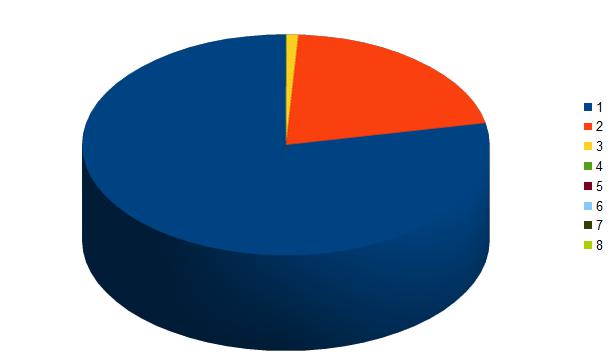
| Parts per million (volume) | Percentage % | |||||||||
| 1 | Nitrogen | N2 | 780.84 | 78.084 | ||||||
| 2 | Oxygen | O2 | 209460 | 20.846 | ||||||
| 3 | Argon | Ar | 9340 | 0.934 | ||||||
| 4 | Carbon dioxide | CO2 | 400 | 0.04 | ||||||
| 5 | Neon | Ne | 18.18 | 0.001818 | |
|||||
| 6 | Helium | He | 5.24 | 0.000524 | ||||||
| 7 | Methane | CH4 | 1.79 | 0.000179 | |
|||||
| 8 | H20 Water Vapor | H2O | 10 – 50,000 | .001 -5% | ||||||
| 9 | Air pollution | Chemicals, Particulate matter, Biological materials | ||||||||

|
||||||||||
The exosphere Earth’s outermost layer extends to 6,200 miles (33,000,000 feet) where upon it merges with solar winds. It is mainly composed of extremely low densities of hydrogen, helium and some nitrogen, oxygen, and carbon dioxide. These particles can easily escape into space.
The mass of Earth's atmosphere is approximately distributed:
| 50% is below 5.6 km (18,000 ft). | 90% is below 16 km (52,000 ft). |
99.99997% is below 100 km (62 mi; 330,000 ft), the Kårmån line. By international convention, this marks the beginning of space where human travelers are considered astronauts.
Most Common Lung Diseases of the lungs:Tuberculosis, pneumonia, whooping cough, diptheria, meningitis and anthrax are examples of bacterial airborne diseases. Tuberculosis and bacterial pneumonia,
Diseases such as the common cold, the flu, measles, mumps, rubella, fifth disease and chickenpox are airborne diseases caused by virus
Source: Inhalation of spores. Vector: Breathing at Location: Carpet and floor dusts, latex paint, moist building materials, molds, and mildews are all sources of fungal spores. Common fungal airborne diseases are Extrinsic allergic alveolitis (EEA) and hypersinsitivity pneumonitis (HP)
What does common household dust contain?
The Four Most Common Allergenic Dust Mite Species 1. Blomia Tropicalis 2. Dermatophagoides Pteronyssinus 3. Dermatophagoides Farinae 4. Euroglyphus Maynei The following from study, published in the journal Environmental Science & Technology: Dust Toxins: Phthalates (source: toys, vinyl flooring), Phenols (cleaning products, flame retardants, fragrances, perflouroalkyl, waterproof coatings), TCEP (flame retardant added to couches), DEP, DEHP, BBzP and DnBP:(varieties of phthalates: drugstore items, some highly processed foods, fast food.)

